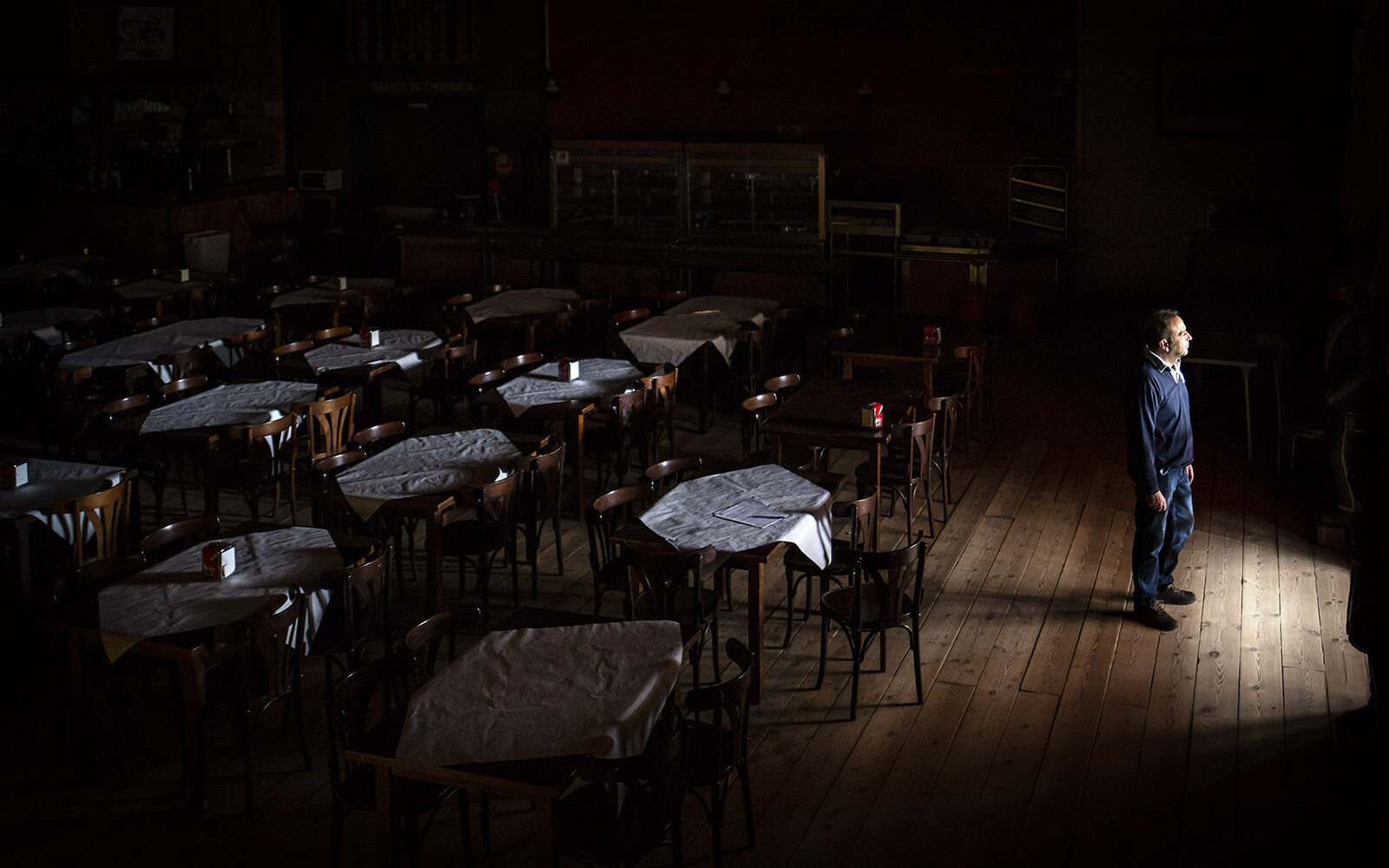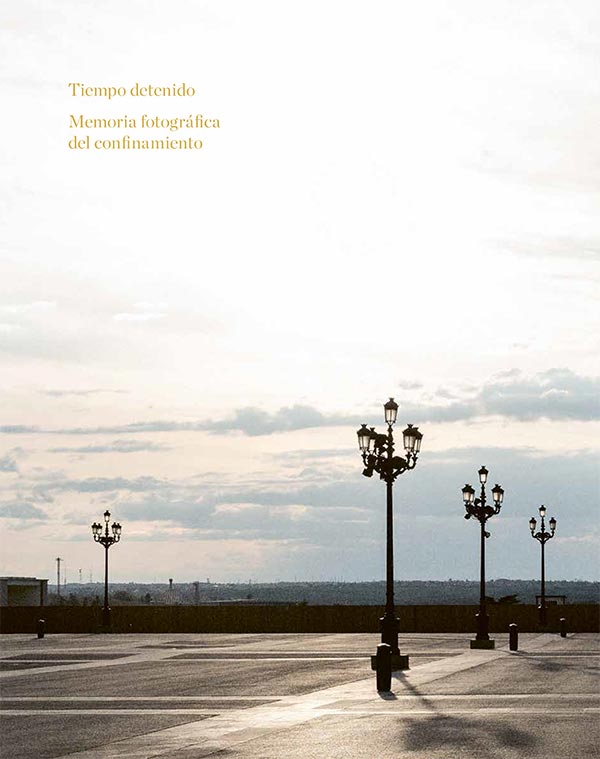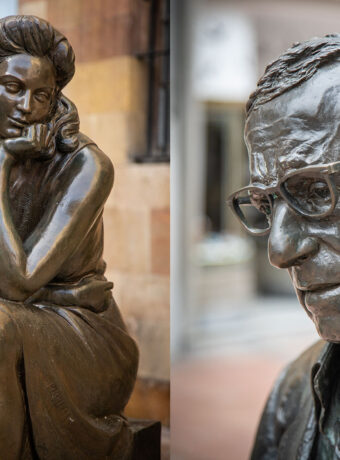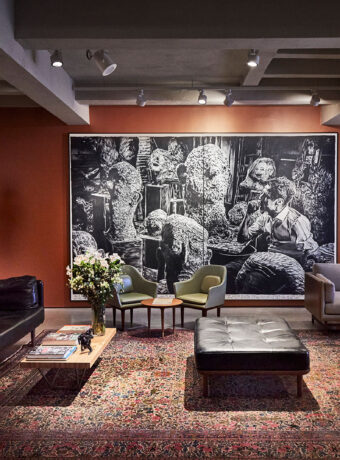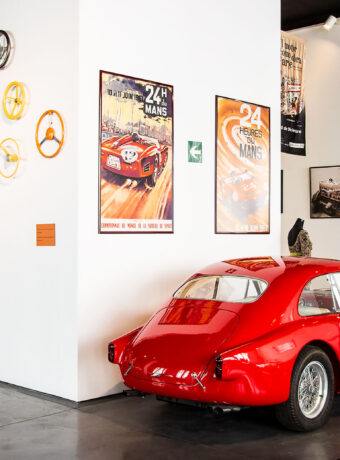“Time in a standstill” is a poignant, poetic and insightful photographic project in which a number of Spanish photographers, through different voices and places, document life from a closed Spain during the pandemic. You can see the entire photo exhibition online.
José A. Aguilera, who owns a country hotel in the Seville area, stands at the entrance to his restaurant waiting for his staff to sign an Employment Relationship Agreement (ERTE). The contract is necessary during the temporary closure of the hotel due to the corona crisis.
The moment is captured by photographer Susana Giron, one of 42 Spanish photographers who have explored the Spanish experience of incarceration. The photographs were taken in the months after the Spanish government declared the country in a state of emergency on 14 March 2020.
Fundación ENIAIRE and PHotoEspaña have brought together the works of 42 photographers in the virtual photo exhibition Time at a Standstill (Tiempo Detenido), which will be on display on the PHotoEspaña website on the occasion of the 23rd edition of the international photo festival.
The many restrictions caused by the coronary pandemic have given a whole new meaning to concepts such as urgency, isolation, absence and time. Our lives have been turned upside down and the photographers examine time from many different angles and points of view in themes such as waiting, illness, death, emptiness, family, solidarity and hope. Some of the photographs are documentary, while others explore dreams and longings.
The multifaceted and reflective photo project, divided into the four themes of Absence, Haste, Waiting and Dreaming, is both a report and a moving and emotional testimony of a time that will remain in our memories.
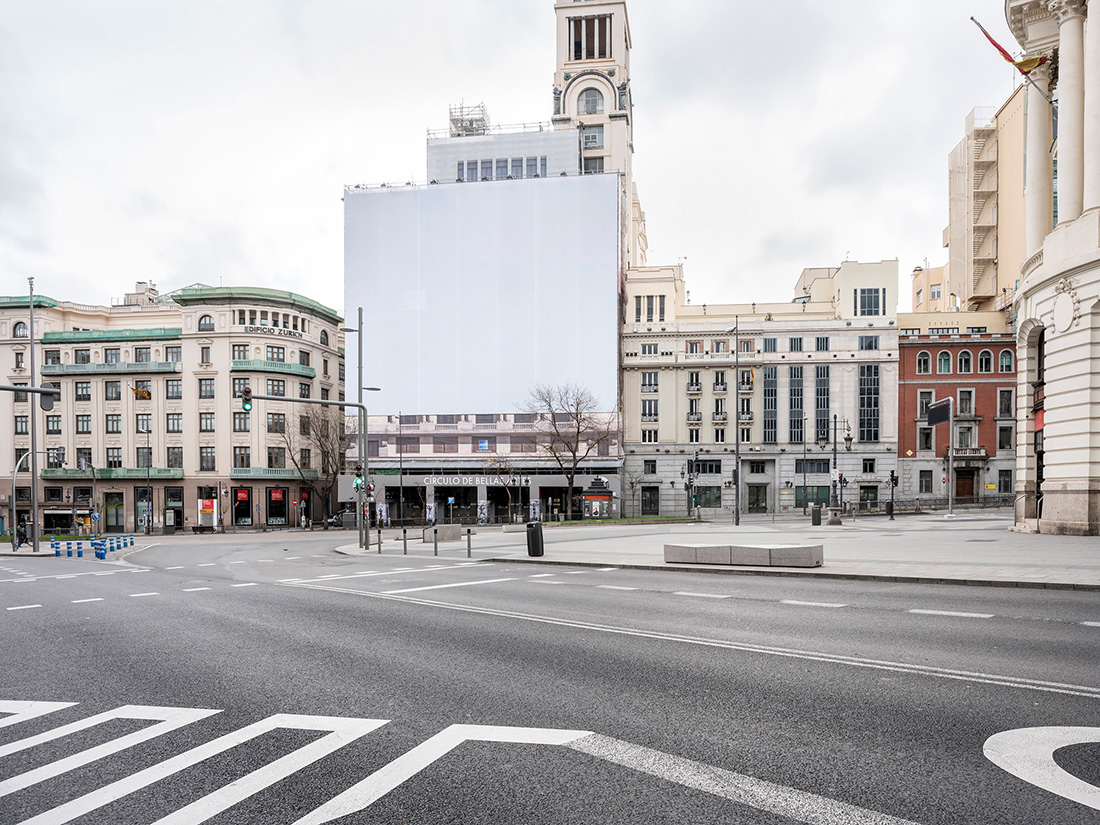
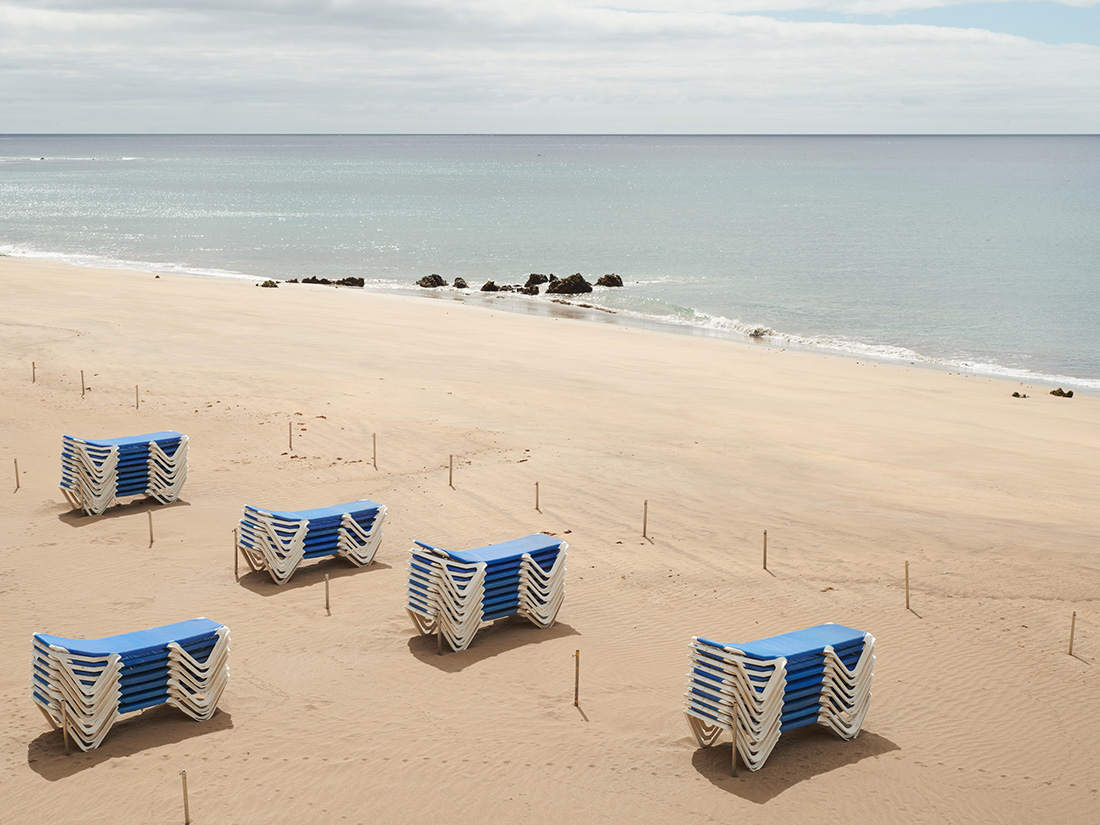
Absence
Crowded boulevards and landmarks in Madrid and Barcelona, sunbeds piled on deserted Mediterranean beaches, a homeless man sleeping in front of a large hotel where construction has stalled, and deserted viewpoints usually filled with happy tourists and locals.
Under the theme “Absence”, a series of photographers portray a ghostly Spain, far from the one we know.
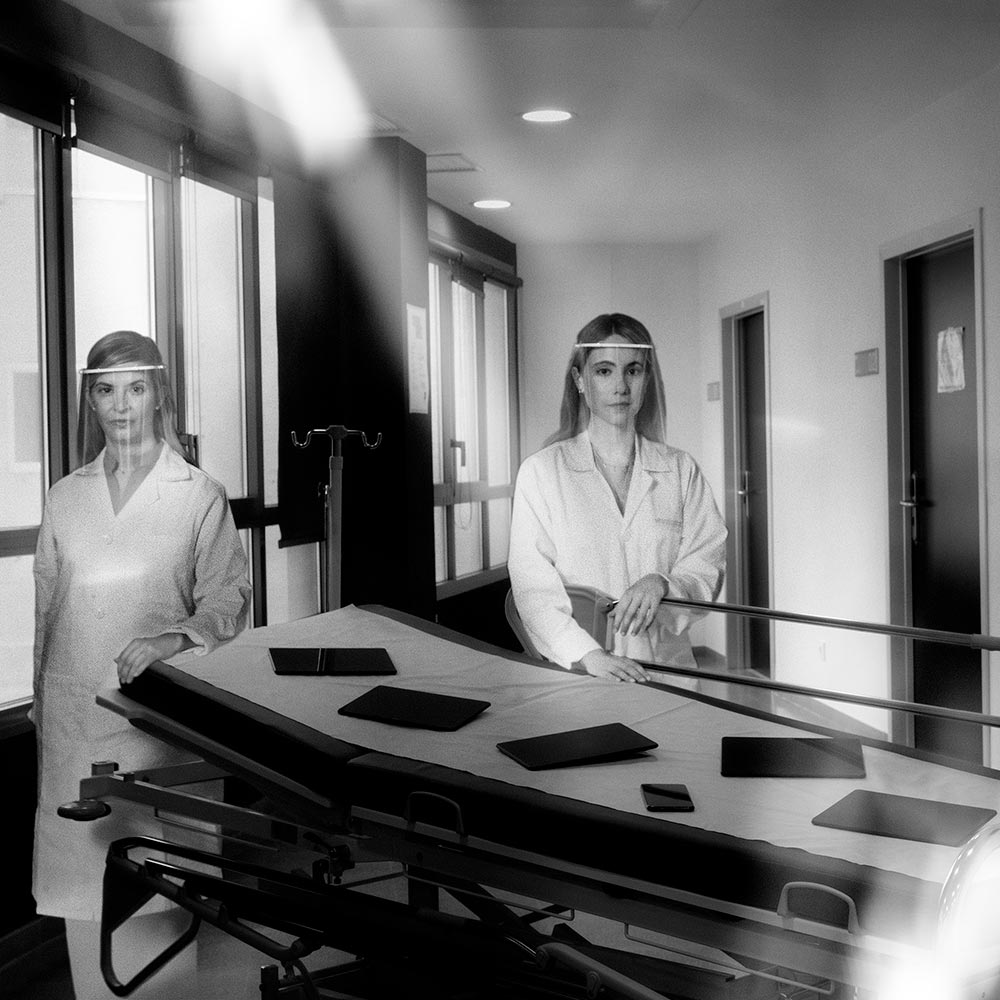
Haster
In a series of aesthetic black and white photos of nurses, firefighters and health workers wearing visors, photographer Isabel Muñoz has created an artistic interpretation of her tribute to the Spanish people on the frontline, which has been published in fashion magazine Vouge.
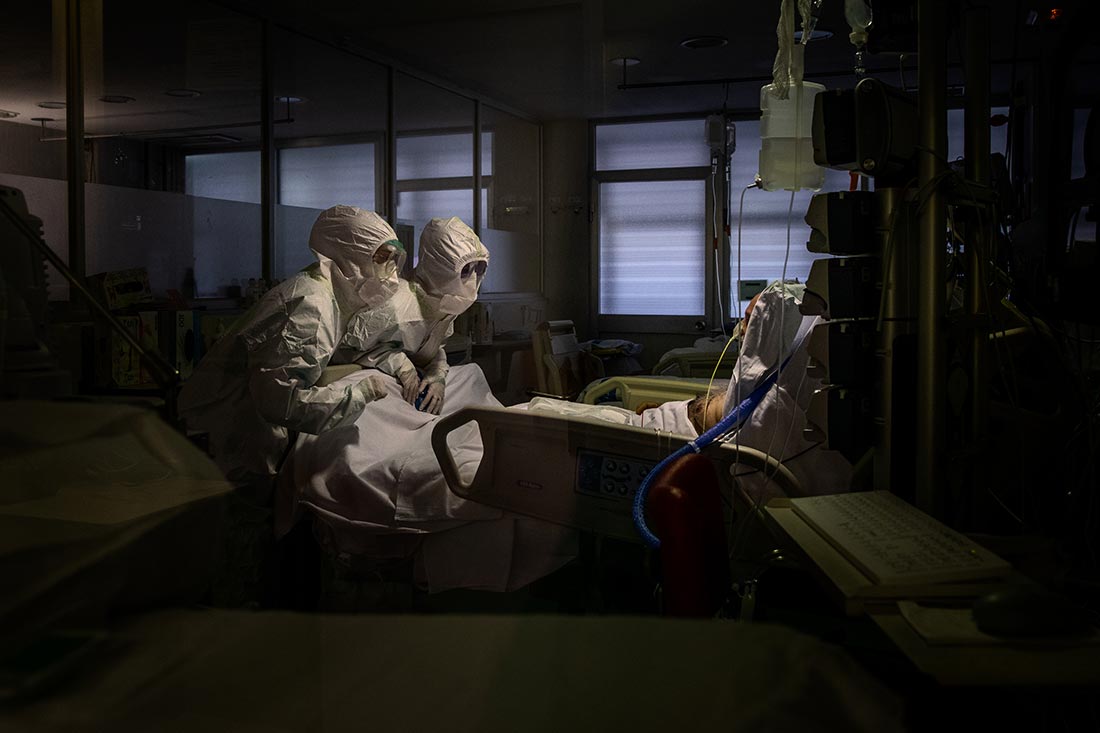
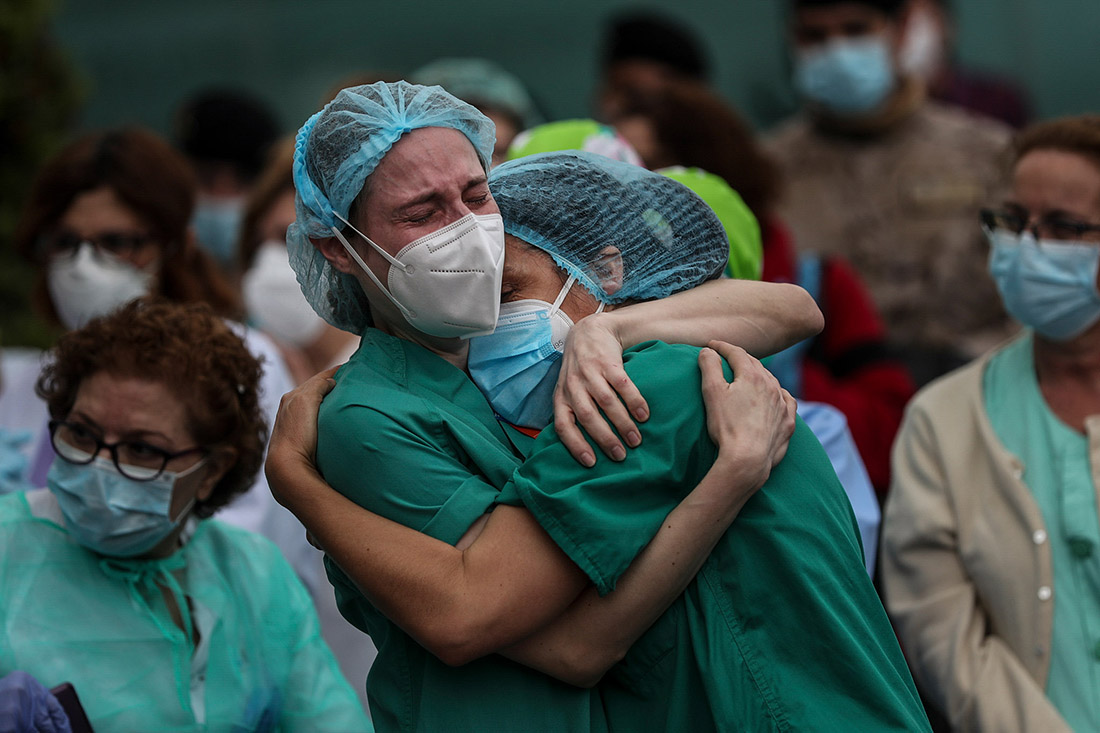
In stark contrast to Muñoz’s black-and-white world are the scores of documentary photos of emergency vehicles and men decontaminating themselves and private homes wearing gas masks and isolating patients and busy doctors and nurses in overcrowded Spanish hospitals.
In the theme “Haster” we witness the harshest and cruellest side of the corona, where corona infected Spaniards fight for their lives, relatives say goodbye to their loved ones and coffins are lined up in long rows in large halls. Meanwhile, life goes on as masked midwives take in new world citizens.
We are also with the hard-pressed doctors and nurses who work until they bleed, and who must also say goodbye to colleagues whose lives were taken by corona.
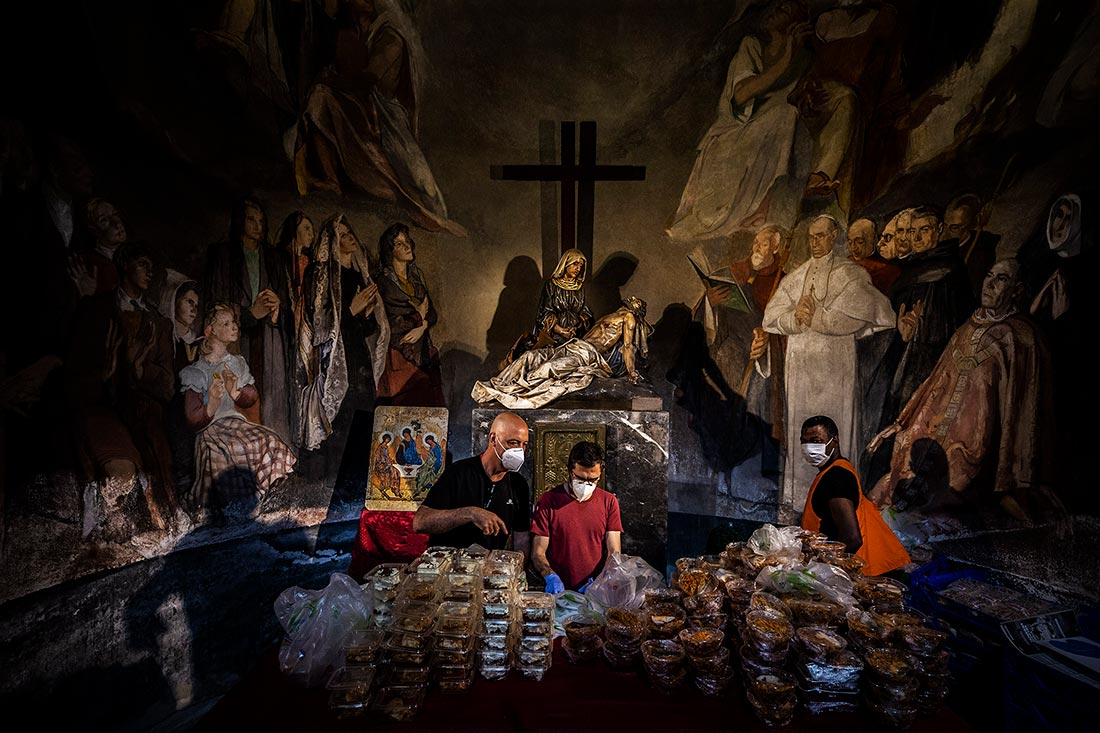
The “Haster” photo series also shows us Spaniards’ unity and care for the weakest in society. Volunteers set up in churches, despite infection risks and restrictions, and distribute essential food to the homeless and others.
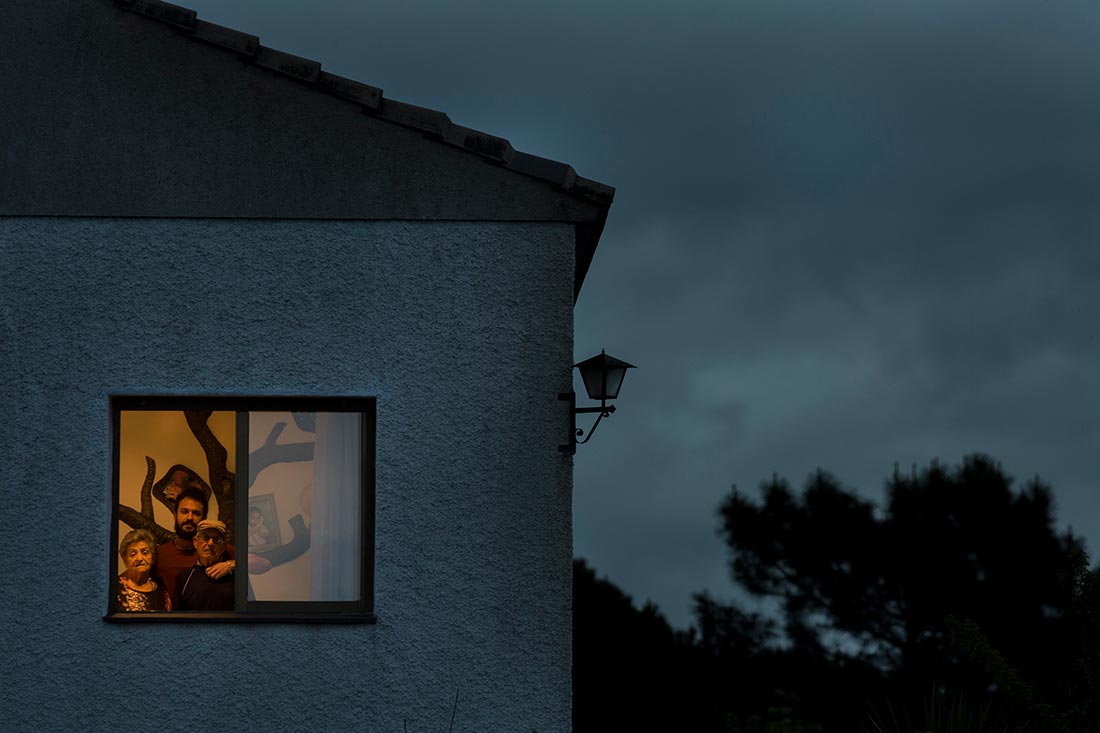
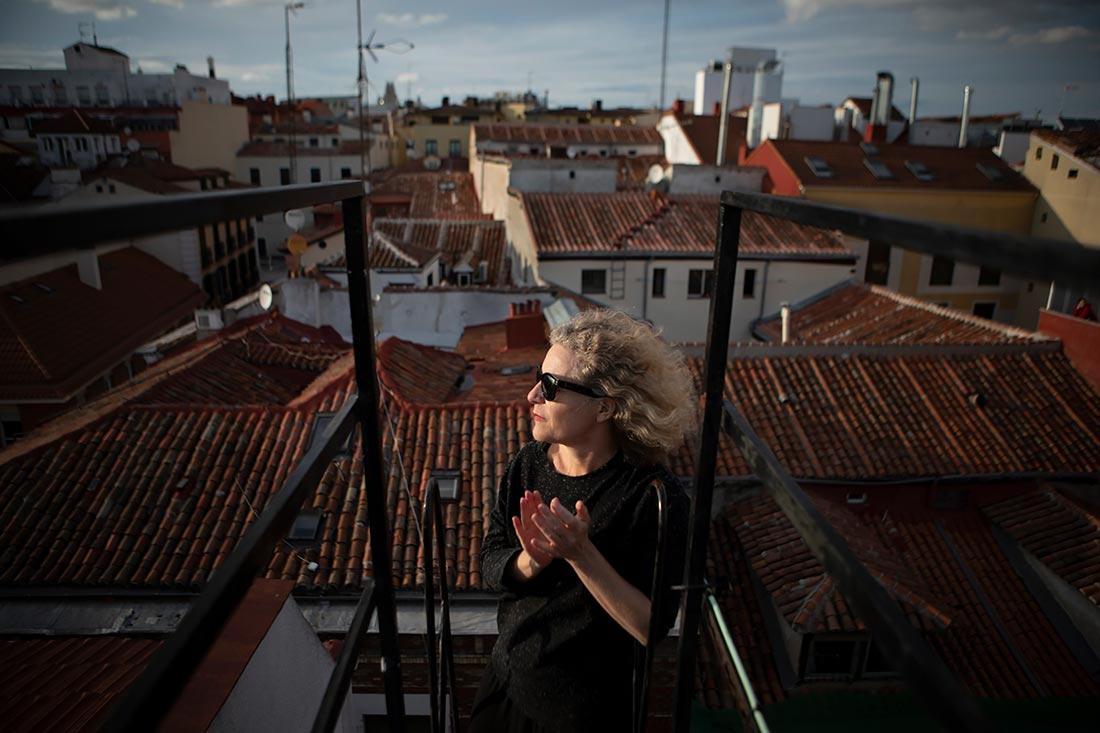
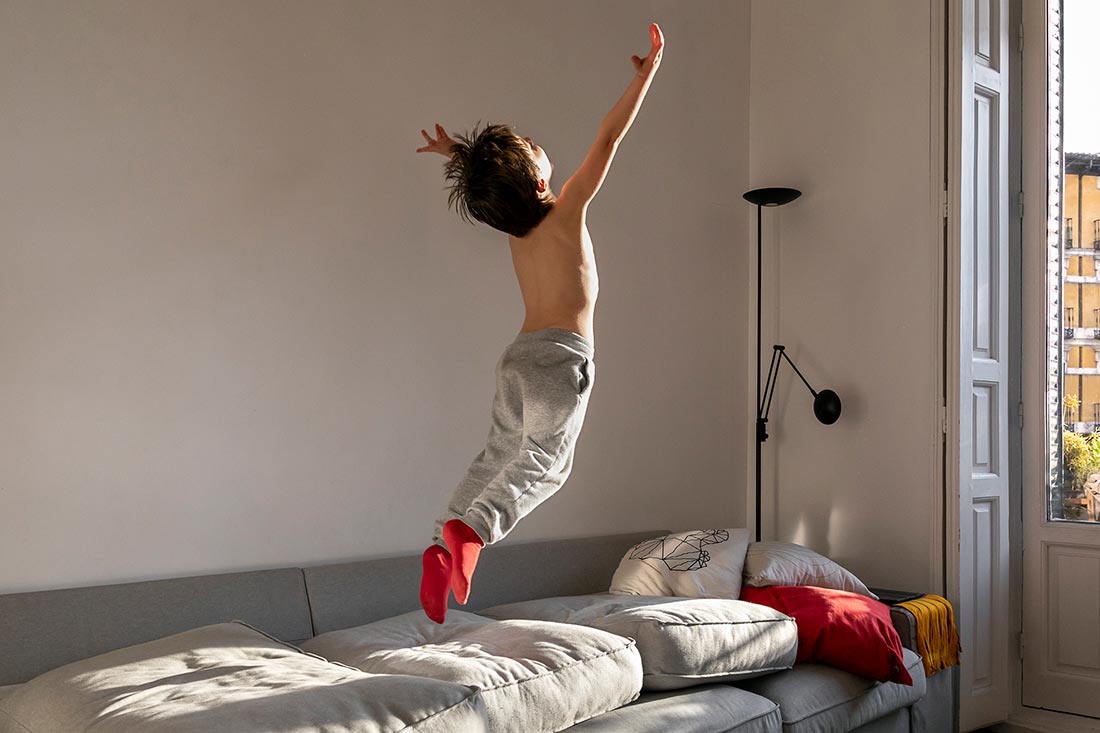
Wait
The theme “Waiting” focuses on the home, where millions of Spaniards were locked up and only allowed to go out to shop – and after a few months – play sports.
We peek in the windows and up the staircases of some of the Spaniards who are isolated with their loved ones in their homes. We also see the Spanish unity that, despite the isolation, unfolded as they saluted the country’s health workers with applause from the balconies every night. A daily event that also reached the world press.
“Waiting” is a reflection on the time that dissolves when work and leisure merge, children are taught at home, boredom, play, greater closeness with loved ones and an increased awareness of one’s own mortality.
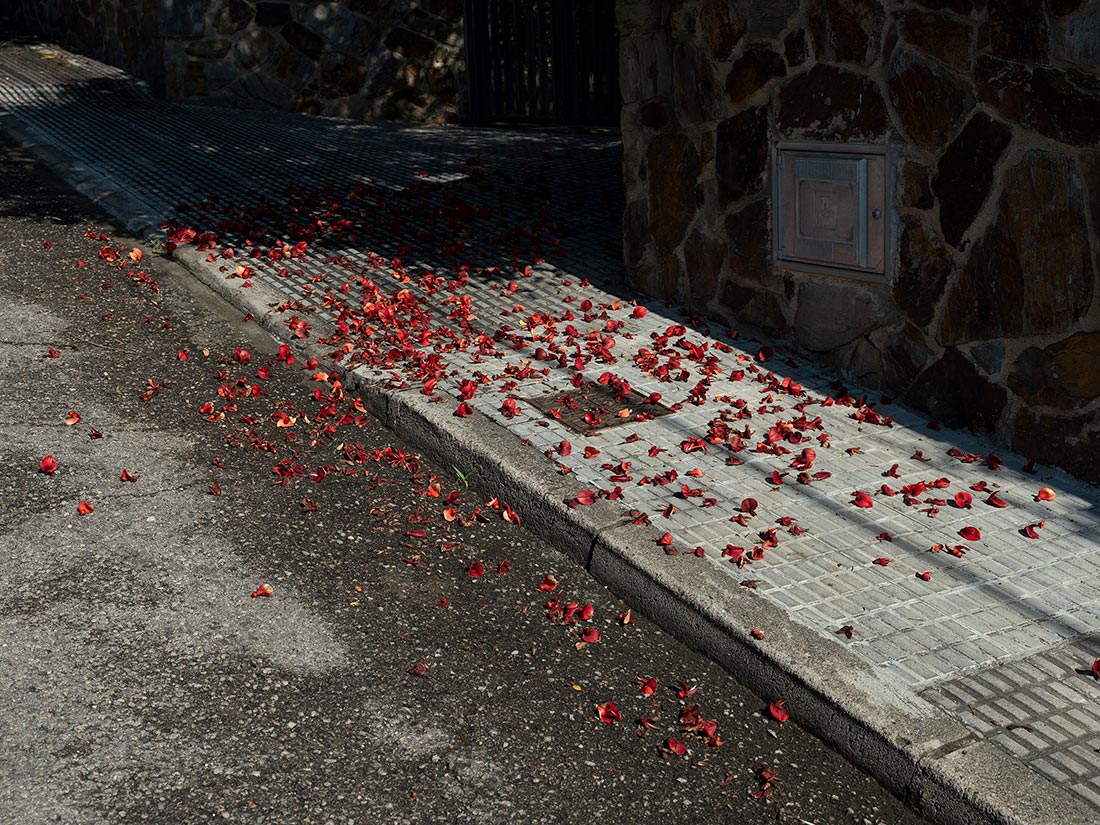
When we are closed in, the changing seasons also flow together and a few photographers have sneaked outside to reflect on that fact as well as the lost time, worries about finances and the future, but also the hope that keeps us together and alive.
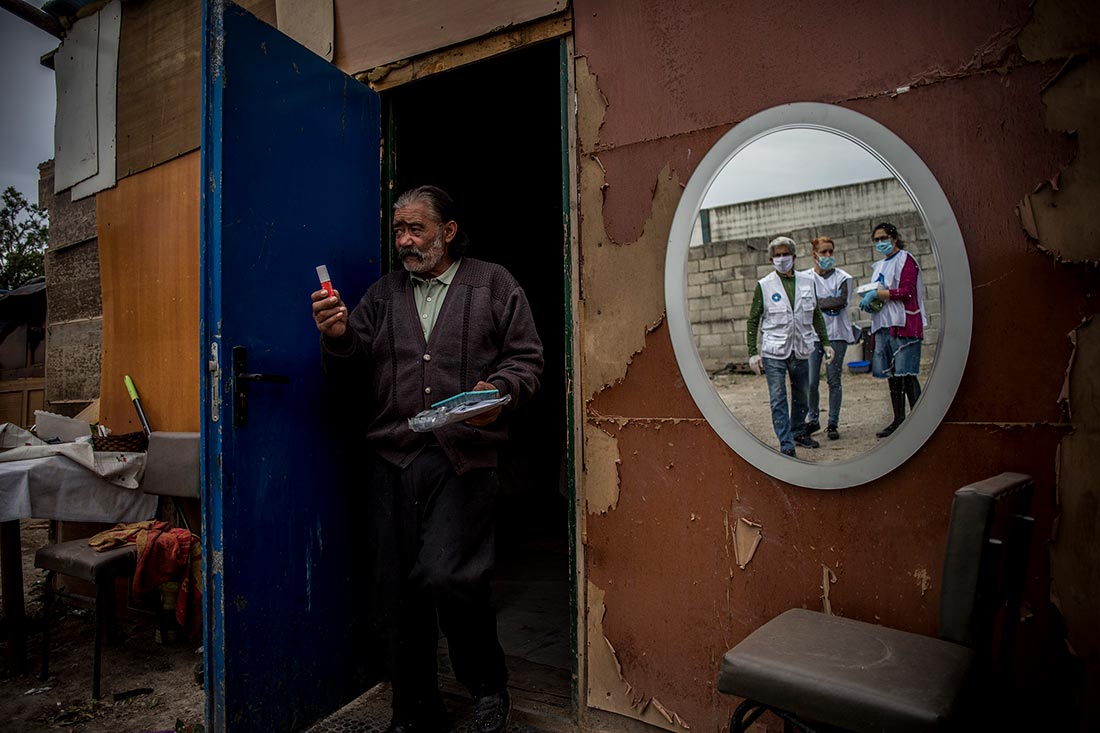
Photographer Javier Fergo’s thought-provoking and important series highlights all those invisible in the pandemic. This applies to the illegal workers living in the slums and the homeless. They don’t have homes with balconies where they can stand and clap every night, just as many have little or no income. A large proportion do not even have a home with running water and electricity, where they can provide the most basic hygiene. To survive the shutdown, they rely on relief agencies.
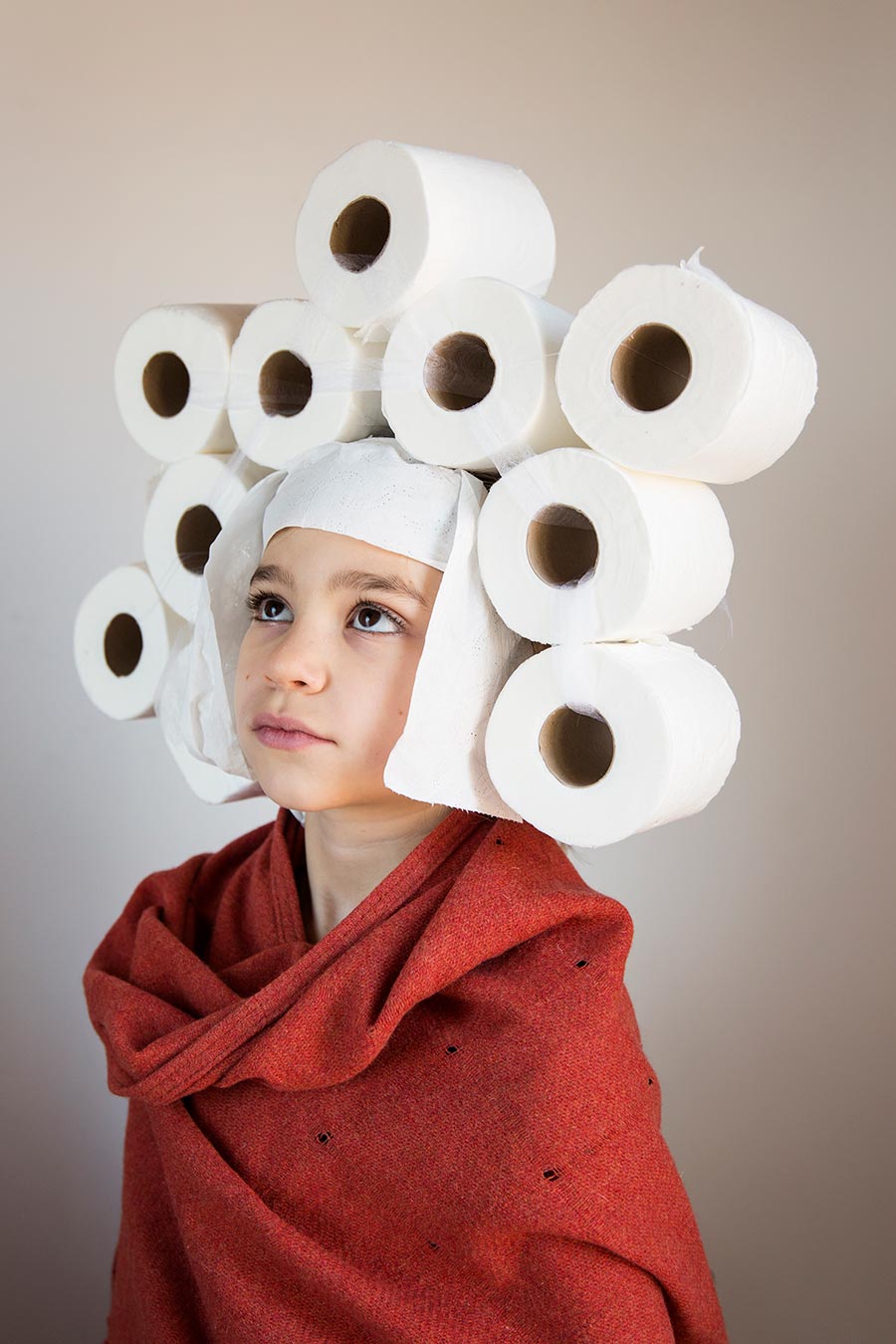
Dreamers
When the world closes, we have the opportunity to rediscover it when it opens again. The time in between gives space to imagine, daydream and reflect, and this is what the photographers do in the theme “Daydreams”, which is definitely the most poetic part of the exhibition.
Photographer Paola de Grenet takes a critical look at our consumption habits with a photograph of a child wearing a toilet paper hat. The Spanish were just as greedy for toilet paper in supermarkets when the country shut down as we Danes were when we were told Denmark was shutting down.

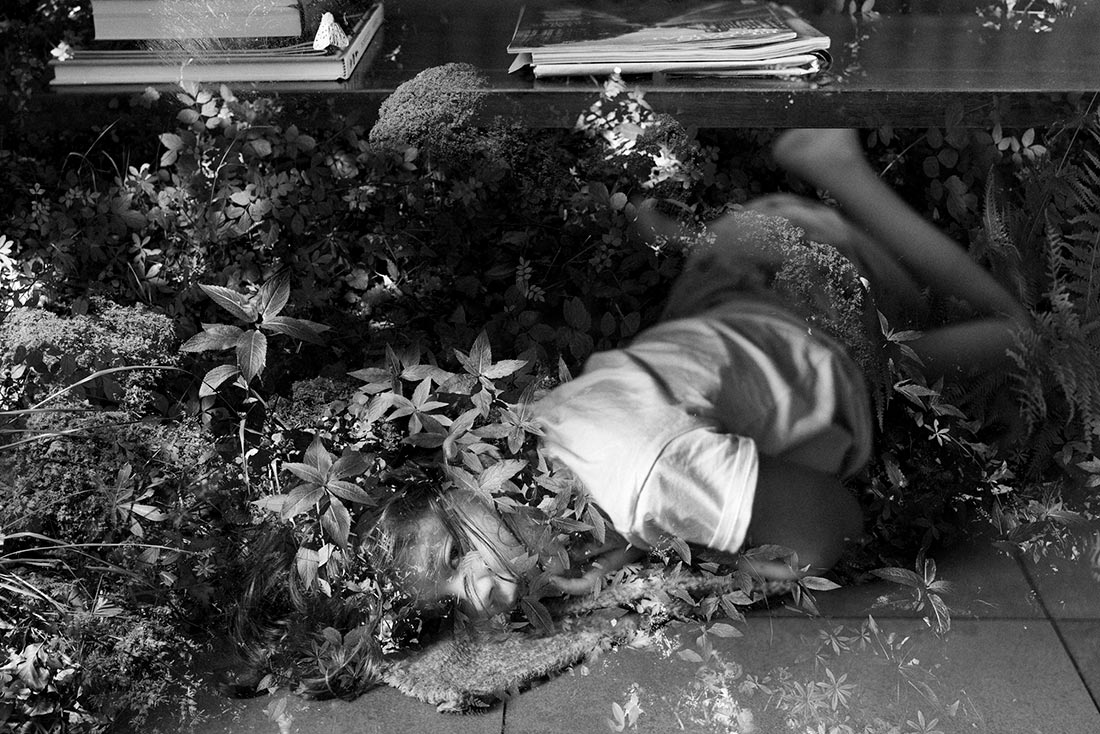
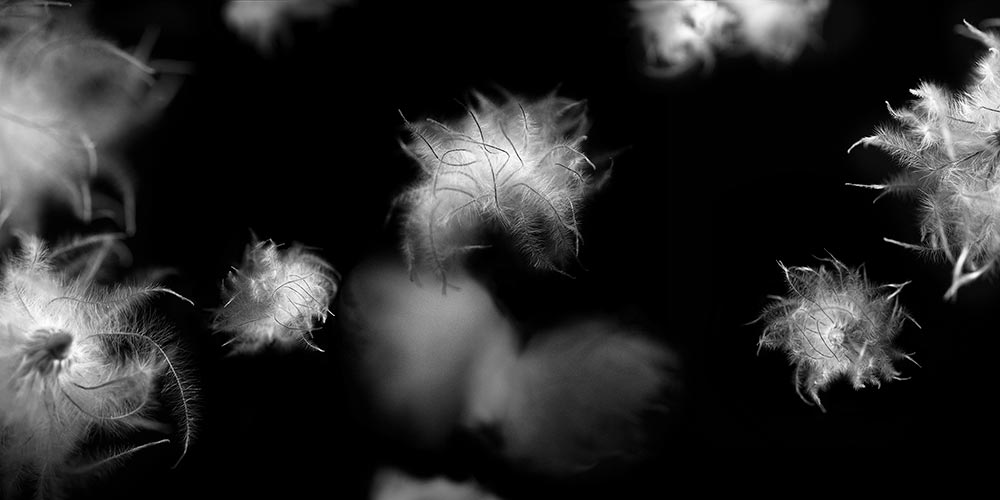
Other photographers used the time to fantasise about the beauty that surrounds them, how corona has highlighted that we humans are united with nature and that we need to take better care of it, and how the virus is everywhere and that we can only hope that the restrictions can soon end and we can live safely and freely again.
See the photo exhibition Time in a standstill here.
In addition to the photographers shown, you can see works by Àlex Llovet, Álvaro Calvo, Ariadna García, Bego Antón, Cristina de Middel, Eugeni Gay, Fernando Maquieira, Gianfranco Tripodo, Isabel Permuy, Jonás Bel, Jordi Bernadó, Jorquera, José Colón, Juan Millás, Manu Bravo, Olmo Calvo, Rafael Andrés, Rafael Trapiello and Rif Spahni, among others.
The public can vote for their favourite photographer until 31 October. The winning photographer receives 3000 euros. However, voting ends on 31 October 2020 (the day after the publication of this article), but you can still view the exhibition online.
The photo project Time in a standstill is also published as a book. You can buy the book (in Spanish) here.
